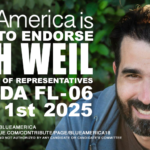
Armageddon ensues, at least from the perspective of insurers, right? Well, yes and no. After all, they still have to comply with the Medical Loss Ratio (MLR) requirements to spend premium dollars on medical benefits. The problem is that the pool of people making claims will grow on a statewide basis and without the mandate, healthy people will figure they can wait till they're not so healthy to buy insurance.
But what if there was a plan that had a national pool, one that was affordable enough for people to join, particularly those eligible for subsidies? National pools are far better than state pools because the larger the numbers participating, the more risk is spread across the entire pool of insureds. Those who were engaged in the fight for health care reform might think of it as a "public option"—that public plan to be administered by the federal government as one option in the statewide exchanges.
We didn't get that. And we didn't get the Medicare buy-in, either. But what we did get was a required option on all state exchanges, and that required option is a plan which includes options offered by the Federal Employees' Health Benefit Plan (FEHBP). The Office of Personnel Management negotiates the rates with insurers each year to cover the giant pool of Federal employees, active and retired, who participate in it. And the Affordable Care Act has a requirement that each state exchange include a plan negotiated by the OPM that is equivalent to the FEHBP plan options.
Oh, one other thing. For years now, the FEHBP plans have not permitted exclusions for pre-existing conditions. That means the national plan won't be able to do that either, but will have the benefit of being a national, rather than state-based, pool of insureds which will drive down costs.
In addition, states which do not establish their own state-based exchanges (such as Texas), will participate in a Federal "fall-back" exchange, comprised of national and local insurance options.
Let's assume for the sake of argument that participation in this national plan increased as people found out it was the most affordable option on the table. We already know the consumer protections, including guaranteed issue are popular, regardless of party affiliation. We also know that millions of people previously excluded from the insurance market are going to be able to enter, but it's possible they may only be able to enter through this one door—the national plan negotiated by the OPM.
Health insurers will start squealing, because while they're cherry-picking insureds from the states where they do business, they're also part of the contract base for the FEHBP federal plan, which means those same insurers are picking up part of the risky group they've been avoiding.
Ultimately, this all leads to one path: Expanding a national plan into one that all employees participate in at a set rate as the minimum baseline plan with basic benefits as defined under the Affordable Care Act. Call it "FEHBP for all". We already know state-based plans can't succeed (particularly without a mandate) because the pool isn't big enough, and we know national plans do succeed because of the mere existence of the FEHBP, not to mention Medicare.
Speaking of Medicare, you should be aware that Senate Republicans would like to use the "FEHBP for all" approach to Medicare, too, which begins to define the lines of argument between liberals and conservatives. I argue that an "FEHBP-for-all" approach for everyone pushes us toward Medicare for All as a viable political alternative. Conservatives will argue that an "FEHBP-for-all" approach justifies pushing the general population away from traditional Medicare and toward plans offered by private insurers.
If nothing else, lines begin to be drawn toward what the present and future of our health care system should be. It's a slow-moving boat with too many moving parts and too many parties-in-interest. Between suppliers, providers, researchers, Big Pharma, and insurers, everyone seems to have more of a dog in the hunt than we, the people. What I want, ultimately, is a way to leverage expanded access to health care into a more efficient, fair and humane system.
As time goes on, I believe health insurers will opt for leaving the basic health benefits -- the plan that 99 percent of us need and yet do not have—to the national plan, and look for ways to layer on "perks" as a profit center. In the meantime, we should be putting pressure on states to make the shift to a single payer plan, either on a state-by-state or a national basis.
Simply put, until health insurers suffer, they're going to keep fighting for their staked-out territory. This national plan may be what makes them sit up and take notice. It's not as good as a straight-up public option. I concede that. But it is a leveraging point, and that's what we need to leverage what might look like a loss into a win.

















